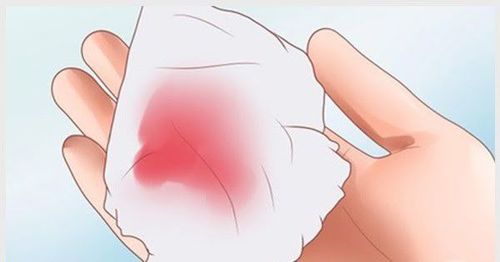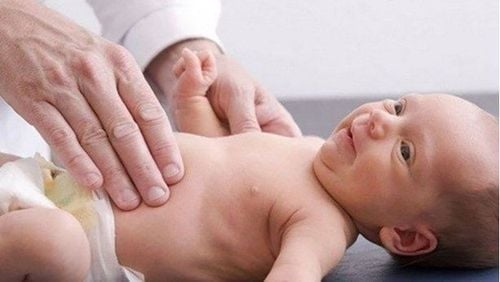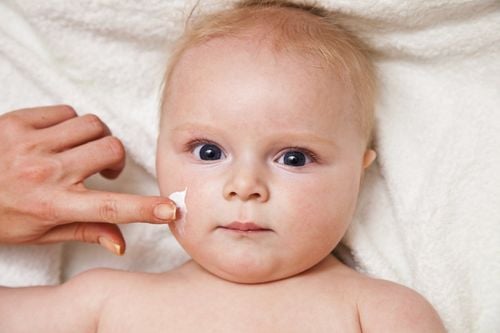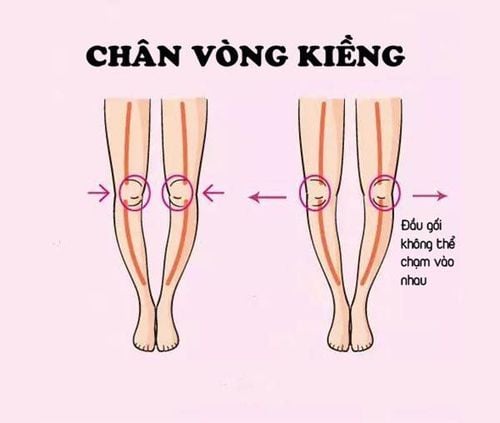This is an automatically translated article.
Children learn to stand is an important premise for children to start their first toddler steps. So should 4-month-old children learn to stand or not? Children who learn to stand early can have bent or bow legs and will make it difficult for them to develop comprehensively later on. The cause of this condition can be medical or physiological. Therefore, parents need to understand the stages of child development to have appropriate exercises to help children develop effectively.
1. What is early standing?
Children who stand early are often shackled, which is always a matter of concern for parents. In fact, every parent will be afraid of some or many things related to their child's development. However, the early standing of children needs to be clearly understood in order to avoid misunderstandings to take inappropriate actions and negatively affect children. To help shed light on this issue, parents need to observe and know the detailed characteristics of their child's development through different age stages. Thanks to this information, parents can determine whether their baby should be standing at a few months old or should a 4-month-old child be allowed to stand?
Between 6 and 10 months, most babies will begin to learn to use their hands and grab onto objects and pull themselves up into a standing position.
Children between 7 and 13 months now begin to grasp and hold objects and move their bodies. It is also at this point that some children are able to take their first steps with the help of an adult.
Children between 11 and 14 months most children can start to learn to walk on their own without the help of loved ones.
Through these stages, it is shown that if a child learns to stand from the age of 4 months, it may be early and so will make the child's legs unable to support the whole body, thereby causing undesirable effects. good for children.

Trẻ 4 tháng cho tập đứng có thể là sớm
2. Signs and causes of foot cuffs in children
A child's legs are shackled or bow legs will appear when the child's legs will have an O shape - an abnormal condition in the legs and is common in young children. When the child's feet are cuffed, put the ankles together so that the child's knees are still facing away from each other. Children with bent legs still develop normally. However, the cause of this condition and can even lead to deformities can be caused by the wrong position of the child when standing or sitting. And there is improvement as the child grows older. In addition, for some children, the bent leg can be caused by a medical condition such as Blount's disease - a disease usually caused by an abnormality in the development of the bones of the leg, and occurs during the child's development, or A bone disorder affecting the shins. Or it can also be caused by vitamin D deficiency in children, causing their legs to be bent. Or it can also be caused by genetic factors.
Signs to identify children with bent legs. If the child stands in a position where his toes are facing forward, but his or her ankles touch and there is space between the knees, or if the knees touch but the ankles do not touch.
Causes of foot cuffs in children can be divided into two main categories: pathological or physiological. In the case of physiological footcuffs, it is possible that it will self-correct over time without the need for a combination, but pathological footcuffs can be due to a number of reasons.
Heredity : Although this cause is quite rare, it is also considered as one of the causes of leg cuffs in children. And when children have this condition, there is often no treatment. At the same time, when the child shows signs of hereditary leg cuffs, parents need to take the child to the orthopedic department for advice on corrective surgery. But in some special cases it may be necessary to wait for the child to grow up to a certain age to intervene in this condition. Due to the child's body weight: When a child has to learn to stand too early, for example, a 4-month-old child who learns to stand or is overweight is also the cause of the child's footcuffs. Because, at this time, the child's skeletal system is still immature and not strong enough to support the whole body of the child, and if the child learns to stand or walk early, it can cause the child's leg structure to change. Other conditions: Round legs in children can also be caused by a long-term nutritional deficiency, such as vitamin D, or by vitreous bone disease or a growth disorder that prevents bones from developing properly. Rickets caused by vitamin D deficiency causes bones to become soft, weak, or easily deformed when bearing the child's body weight. Currently, this disease is also quite rare in children. Because children are supplemented with adequate levels of calcium and vitamin D according to the recommended daily needs and children avoid the risk of encountering this disease.

Cha mẹ có thể tập đứng cho trẻ từ tháng thứ 9
3. Time to practice standing of children and some exercises to help children develop muscles
All children's activities will take place according to a certain cycle. 3-month-old babies can use two hands to push up the body and can roll over from 4 to 6 months. When babies are 7 to 8 months old, they start crawling, and then they can learn to stand. Therefore, parents can practice standing for children from the 9th month. However, the application of standing training time for children depends on the child's physical development or parents can support the child. Create a fulcrum so that the child can grip firmly and partly reduce the pressure to support the child's body and also help the child avoid the risk of falling, or injury.
In order to help the child's training process be effective, parents need to understand and apply appropriate movements for the child to help the child's body develop strong enough to be able to perform flipping operations. crawl, stand and walk. In addition to providing enough nutrients for children according to the recommended needs, parents can combine playing with children with games to help develop children's muscles so that children can be stable in all their activities.
Parents can lie down on the bed or on a flat surface for the child to sit on their stomach and use toys that are colorful and make noises. Parents will move these objects in front of the child to attract the child's attention. If the child already knows how to hold objects or toys, parents can play the game of holding the child's fingers. When the child's hand grasps the parent's hand, it follows the parent's position to bring the child's hand to the left and then to the right. Parents can put the baby in a bed that can be on his or her stomach or back, and then place toys that are bright colors or that make noises nearby. And then the parents will draw attention to the baby with the sound so that the baby can crawl back to get these toys. Parents can hold the baby on their stomach on their chest and start playing with the baby to stimulate the baby, the baby will probably raise his head. This movement will help strengthen the neck muscles of the child. If the child shows signs of bowing or footcuffs, parents can take the child to Vinmec International General Hospital for examination and receive support and advice from qualified doctors. Pediatrics Department at Vinmec is one of the few multi-specialty hospitals with a full range of doctors specializing in neurology, cardiology, gastroenterology, nutrition, psychology, endocrinology, and hepatobiliary care, helping to quickly and promptly handle the disease. detect diseases during the examination. As a key area of Vinmec Medical system, Pediatrics Department always brings satisfaction to customers and is highly appreciated by industry experts with:
Gathering a team of leading pediatricians: including leading experts with high professional qualifications (professors, associate professors, doctorates, masters), experienced, worked at major hospitals such as Bach Mai, 108.. Doctors All are well-trained, professional, with a mind - range, understanding young psychology. In addition to domestic pediatric specialists, the Department of Pediatrics also has the participation of foreign experts (Japan, Singapore, Australia, USA) who are always pioneers in applying the latest and most effective treatment regimens. . Comprehensive services: In the field of Pediatrics, Vinmec provides a series of continuous medical examination and treatment services from Newborn to Pediatric and Vaccine,... according to international standards to help parents take care of their baby's health from birth to childhood. from birth to adulthood Specialized techniques: Vinmec has successfully deployed many specialized techniques to make the treatment of difficult diseases in Pediatrics more effective: neurosurgery - skull surgery, stem cell transplantation. blood in cancer treatment. Professional care: In addition to understanding children's psychology, Vinmec also pays special attention to the children's play space, helping them to have fun and get used to the hospital's environment, cooperate in treatment, improve the efficiency of medical treatment.
Please dial HOTLINE for more information or register for an appointment HERE. Download MyVinmec app to make appointments faster and to manage your bookings easily.













